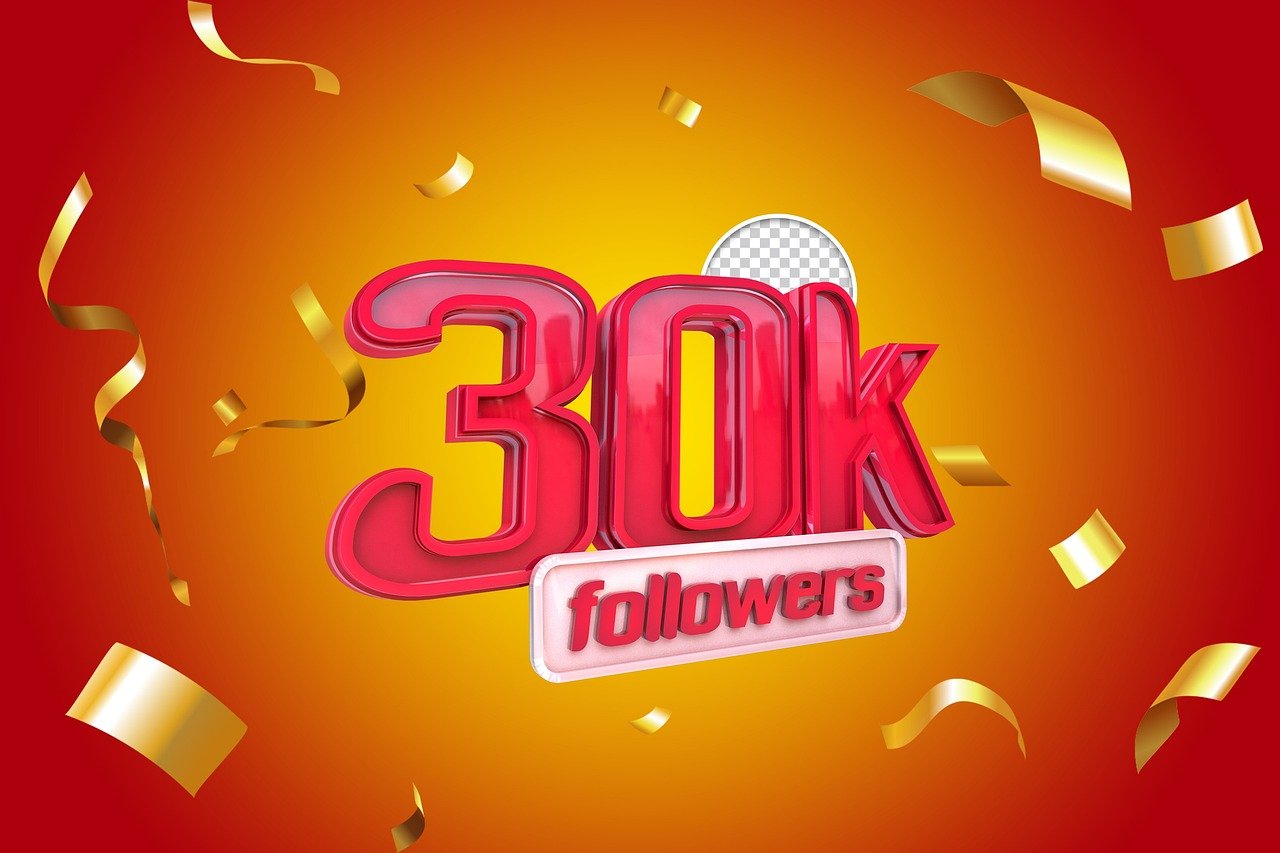What Is the Internet of Things? Discover IoT Technology & Benefits | 2024

Introduction to IoT
The Internet of Things (IoT) represents a revolutionary shift in how we interact with the world around us. It encompasses a vast network of interconnected devices that communicate and share data to create a more efficient and automated environment.
What Is the Internet of Things?
The network of physically connected objects that communicate and share data over the Internet is referred to as the Internet of Things (IoT). These gadgets include sophisticated industrial machines and commonplace home appliances like refrigerators and thermostats. IoT devices gather and communicate data by utilizing sensors, software, and other technologies, which facilitates automated processes and more intelligent decision-making.
History and Evolution of IoT: From Concept to Reality
Introduction
The Internet of Things (IoT) is a revolutionary technology that has transformed the way we live and work. This journey from concept to widespread implementation is marked by significant milestones and advancements. Let’s explore the history and evolution of the Internet of Things (IoT), highlighting key developments and their impact on various industries.
Early Concepts and Foundations
1980s: The Birth of the Concept
The concept of connected devices dates back to the 1980s when the idea of embedding sensors and computing devices into physical objects was first explored. Researchers and visionaries like Mark Weiser introduced the notion of “ubiquitous computing,” laying the groundwork for the Internet of Things (IoT).
1990s: Initial Developments
The 1990s saw the first practical implementations of IoT. In 1991, John Romkey connected a toaster to the internet, showcasing the potential of IoT. In 1999, Kevin Ashton coined the term “Internet of Things” while working at Procter & Gamble, emphasizing the importance of RFID (Radio Frequency Identification) technology in connecting devices.
Technological Advancements
2000s: Emergence of IoT Platforms
The early 2000s witnessed the development of IoT platforms and standards. Companies like IBM and Cisco began investing in IoT research, leading to the creation of platforms that facilitated device connectivity and data exchange. The introduction of IPv6 also played a crucial role by providing an expanded address space for billions of connected devices.
2010s: Expansion and Adoption
The 2010s marked a period of rapid expansion and adoption of IoT. Advancements in wireless technology, cloud computing, and big data analytics propelled IoT into mainstream applications. Smart home devices, wearable technology, and industrial Internet of Things (IoT) solutions have become increasingly prevalent.
Key Milestones
2011: Launch of Google’s Nest
It demonstrated how connected devices could enhance convenience, energy efficiency, and user experience.
The Industrial Internet Consortium (IIC) was established in 2014.
The Industrial Internet Consortium (IIC) was established in 2014 by prominent corporations such as GE, IBM, and AT&T with the aim of expediting the expansion of industrial IoT. This collaboration aimed to establish standards and best practices for deploying IoT in industrial settings.
2016: Expansion of Smart Cities
Cities worldwide began implementing IoT solutions for traffic management, waste management, and public safety. Barcelona and Singapore emerged as pioneers in adopting smart city technologies.
Present and Future
2020s: Ubiquity and Innovation
The 2020s have seen IoT becoming ubiquitous, with billions of connected devices worldwide. Innovations in artificial intelligence, machine learning, and edge computing are enhancing the capabilities of IoT, enabling real-time data processing and advanced analytics.
Future Prospects
These technologies will further enhance the scalability, security, and efficiency of IoT applications. The integration of IoT with emerging technologies like augmented reality (AR) and virtual reality (VR) will unlock new possibilities across various sectors.
How IoT Works
How IoT Works: Understanding the Mechanisms Behind the Technology
Introduction
The Internet of Things (IoT) connects various devices and systems to the internet, enabling them to collect, share, and act on data. Understanding how IoT works involves grasping the components, processes, and technologies that make this connectivity possible. Let’s delve into the mechanisms behind IoT to understand its functioning.
Components of IoT
1. Sensors and Actuators
- Sensors: These devices collect data from the environment, such as temperature, humidity, motion, and light. They convert physical parameters into electrical signals that can be processed.
- Actuators: These components receive commands from the IoT system and perform actions, such as turning on a light, adjusting a thermostat, or opening a valve.
2. Connectivity
IoT devices communicate with each other and central systems through various connectivity options:
- Wi-Fi: Common in home IoT devices for high-speed internet access.
- Bluetooth: Used for short-range communication between devices.
- Cellular Networks: Provide wide-area coverage, essential for mobile and remote IoT applications.
- LoRaWAN and Zigbee: Low-power, long-range communication technologies ideal for industrial and agricultural IoT.
3. Edge Devices
Edge devices, such as gateways and edge servers, process data locally before sending it to the cloud. This reduces latency and bandwidth usage, enabling real-time responses and efficient data management.
4. Cloud Platforms
Cloud platforms store, analyze, and manage data collected from IoT devices. They provide scalable infrastructure for data processing, machine learning, and application hosting.
5. User Interfaces
User interfaces, such as mobile apps and web dashboards, allow users to interact with IoT systems. They provide real-time data visualization, device control, and alerts, enhancing user experience and decision-making.
IoT Processes
1. Data Collection
Sensors collect data from their surroundings. For instance, a smart thermostat gathers temperature readings, while a wearable fitness tracker monitors heart rate and activity levels.
2. Data Transmission
This can involve sending data to a cloud server via the internet or to an edge device for local processing.
3. Data Processing
This can occur at different levels:
- Edge Processing: Initial data filtering and analysis are performed locally on edge devices to reduce latency.
- Cloud Processing: Advanced analytics, machine learning, and big data processing occur in the cloud, leveraging powerful computing resources.
4. Data Storage
Processed data is stored in databases for future reference, historical analysis, and compliance purposes. Cloud storage solutions provide scalable and secure storage options for vast amounts of IoT data.
5. Action and Control
Based on the analyzed data, actions are initiated through actuators or user interfaces. For example, a smart irrigation system activates sprinklers based on soil moisture levels, or a user adjusts home lighting using a mobile app.
Technologies Enabling IoT
1. Machine Learning and AI
Machine learning and artificial intelligence enhance IoT by enabling predictive analytics, anomaly detection, and automated decision-making. These technologies allow IoT systems to learn from data and improve over time.
2. Big Data Analytics
This helps in optimizing operations, enhancing user experiences, and making informed decisions.
3. Blockchain
Blockchain technology ensures data integrity, security, and transparency in IoT systems.
4. 5G Connectivity
5G technology offers high-speed, low-latency connectivity, crucial for real-time IoT applications such as autonomous vehicles, smart cities, and industrial automation.
Key IoT Technologies
Key IoT Technologies: Driving the Future of Connectivity
Introduction
The Internet of Things (IoT) relies on a suite of advanced technologies to enable seamless connectivity, data collection, processing, and action. These technologies form the backbone of IoT systems, facilitating their deployment and functionality across various sectors. Here are the key IoT technologies that are driving the future of connectivity.
1. Sensors and Actuators
Sensors
Sensors are critical for IoT as they collect data from the environment. They convert physical phenomena (like temperature, humidity, light, motion) into electrical signals. Common types of sensors include:
- Temperature Sensors: Measure heat to detect temperature changes.
- Motion Sensors: Detect movement and are used in security systems.
- Light Sensors: Measure light intensity, used in smart lighting systems.
Actuators
Actuators perform actions based on data received. They convert electrical signals into physical actions, such as:
- Motors: Used in robotics and industrial machines.
- Valves: Control fluid flow in smart irrigation systems.
- Relays: Switch electrical circuits on and off in smart homes.
2. Connectivity Technologies
Wi-Fi
Wi-Fi provides high-speed internet access and is commonly used in home IoT devices like smart thermostats and security cameras.
Bluetooth
Bluetooth is used for short-range communication, often in wearable devices and smart home products.
Cellular Networks (3G, 4G, 5G)
Cellular networks offer wide-area coverage, essential for mobile IoT applications like connected cars and smart cities. 5G, in particular, offers low latency and high bandwidth, enabling real-time IoT applications.
LoRaWAN (Long Range Wide Area Network)
LoRaWAN is designed for low-power, long-range communication, ideal for agricultural and industrial IoT applications.
Zigbee
Zigbee is a low-power, low-data-rate wireless technology used in smart homes and building automation systems.
3. Edge Computing
Edge computing processes data closer to the source (i.e., the edge of the network) rather than sending it all to the cloud. Edge devices like gateways and microcontrollers are key components in this technology.
4. Cloud Computing
Cloud computing provides scalable storage and processing power for IoT data. It enables advanced data analytics, machine learning, and application hosting. Major cloud platforms offering IoT services include:
- AWS IoT
- Microsoft Azure IoT
- Google Cloud IoT
5. Big Data Analytics
This technology is crucial for predictive maintenance, anomaly detection, and optimizing operations. Tools like Apache Hadoop and Spark are commonly used in big data processing.
6. Artificial Intelligence (AI) and Machine Learning (ML)
AI and ML enhance IoT systems by enabling them to learn from data, make predictions, and automate decision-making. Applications include:
- Predictive Maintenance: Predicting equipment failures before they occur.
- Voice-activated gadgets such as Google Assistant and Amazon Alexa are known as smart assistants.
- Self-driving automobiles employ artificial intelligence (AI) to navigate and make choices in real time.
7. Blockchain
Blockchain technology ensures data security, transparency, and integrity in IoT systems. It provides a decentralized ledger to record transactions and interactions between devices, preventing tampering and fraud. Blockchain is particularly useful in supply chain management and secure data sharing.
8. 5G Connectivity
5G technology offers high-speed, low-latency connectivity, crucial for real-time IoT applications. It supports massive device connectivity and is essential for applications like:
- Smart Cities: Efficient traffic management and public safety systems.
- Industrial Automation: Real-time monitoring and control of industrial processes.
IoT Applications in Various Sectors: Revolutionizing Industries with Smart Technology
Introduction to IoT
The Internet of Things (IoT) is a transformative technology reshaping industries worldwide. Here, we explore the diverse applications of IoT across various sectors.
IoT in Healthcare
Remote Patient Monitoring
IoT devices like wearable health monitors track vital signs, allowing healthcare providers to monitor patients’ health in real-time. This reduces hospital visits and enhances patient care.
Smart Medical Devices
Connected medical devices, such as insulin pumps and heart rate monitors, provide accurate data, improving treatment outcomes and enabling proactive healthcare management.
IoT in Agriculture
Precision Farming
Farmers can make data-driven decisions to optimize irrigation, fertilization, and pest control, leading to higher crop yields and resource efficiency.
Livestock Monitoring
IoT-enabled wearable devices for livestock monitor health, location, and activity levels, ensuring timely interventions and improving animal welfare.
IoT in Manufacturing
Predictive Maintenance
IoT sensors in machinery detect potential issues before they cause breakdowns.
Smart Factories
Connected devices and systems streamline operations, enhance production efficiency, and enable real-time monitoring and control of manufacturing processes.
IoT in Smart Cities
Intelligent Traffic Management
IoT solutions manage traffic flow, reduce congestion, and enhance public transportation efficiency through real-time data analysis and adaptive signal control.
Environmental Monitoring
IoT sensors track air and water quality, noise levels, and waste management, helping city authorities make informed decisions to improve urban living conditions.
IoT in Energy Management
Smart Grids
IoT technology enables efficient energy distribution, real-time monitoring, and integration of renewable energy sources, leading to reduced energy consumption and costs.
Home Automation
IoT-powered smart home devices, such as thermostats and lighting systems, optimize energy usage, providing convenience and cost savings for homeowners.
IoT in Retail
Inventory Management
IoT solutions track inventory levels in real time, reducing stockouts and overstock situations, and enhancing supply chain efficiency.
Personalized Shopping Experience
IoT devices analyze customer behavior and preferences, enabling retailers to offer personalized recommendations and improve customer satisfaction.
Benefits of IoT
Improved Efficiency
IoT enables automation and real-time monitoring, leading to significant improvements in operational efficiency across various industries. By automating routine tasks and optimizing resource usage, organizations can achieve higher productivity and cost savings.
Enhanced Data Collection
The ability to collect and analyze vast amounts of data from IoT devices provides valuable insights that drive better decision-making. This data-driven approach helps organizations understand trends, identify issues, and implement effective solutions.
Cost Savings
Predictive maintenance, for example, minimizes the risk of equipment failure and extends the lifespan of machinery, resulting in lower maintenance costs.
Better Decision Making
IoT provides real-time data that supports informed decision-making. Organizations can respond quickly to changing conditions, improve operational processes, and deliver better products and services to their customers.
Challenges and Risks
Security Concerns
One of the biggest challenges facing IoT is ensuring the security of connected devices and the data they generate. Cybersecurity threats, such as hacking and data breaches, pose significant risks to both individuals and organizations.
Data Privacy Issues
With the vast amounts of data collected by IoT devices, privacy concerns are paramount. Ensuring that data is collected, stored, and used responsibly is crucial to maintaining user trust and complying with regulations.
Implementation Challenges
Deploying IoT solutions can be complex and require significant investment in infrastructure and expertise. Organizations must navigate technical challenges, interoperability issues, and scalability concerns to successfully implement IoT projects.
Future Trends in IoT
AI and Machine Learning Integration
The integration of artificial intelligence (AI) and machine learning (ML) with IoT is driving the development of more intelligent and autonomous systems. AI and ML enable predictive analytics, anomaly detection, and adaptive learning, enhancing the capabilities of IoT devices.
5G and IoT
The rollout of 5G networks is set to revolutionize IoT by providing faster, more reliable, and lower-latency connectivity. This will enable the deployment of more complex and data-intensive IoT applications, such as autonomous vehicles and smart cities.
Edge Computing
This approach is particularly beneficial for applications that require immediate responses, such as industrial automation and healthcare.
Sustainable IoT Solutions
As environmental concerns grow, there is an increasing focus on developing sustainable IoT solutions. Energy-efficient devices, renewable energy sources, and smart resource management are key areas of innovation in this space.
IoT Standards and Regulations
Standardization Efforts
Standardization is crucial for ensuring interoperability and security in IoT systems. Various organizations, such as the International Organization for Standardization (ISO) and the Institute of Electrical and Electronics Engineers (IEEE), are working on developing and promoting IoT standards.
Regulatory Frameworks
Governments and regulatory bodies are establishing frameworks to address the security, privacy, and ethical implications of IoT. Compliance with these regulations is essential for organizations to build trust and ensure the safe and responsible use of IoT technology.
Case Studies
Successful IoT Implementations
Several case studies highlight the successful implementation of IoT across different industries. For example, smart grids in the energy sector have improved energy distribution and reduced outages, while connected logistics solutions have enhanced supply chain visibility and efficiency.
Lessons Learned
Understanding these insights can help organizations navigate their own IoT journeys more effectively.
Getting Started with IoT
Essential Tools and Platforms
To begin with IoT, several tools and platforms are available that simplify development and deployment. Popular IoT platforms include AWS IoT, Microsoft Azure IoT, and Google Cloud IoT, which provide comprehensive services for connectivity, data processing, and analytics.
IoT Development Kits
IoT development kits, such as Arduino and Raspberry Pi, offer an accessible entry point for building and prototyping IoT projects. These kits come with pre-built hardware and software components, enabling rapid experimentation and innovation.
Building Your First IoT Project
Starting with a small-scale project is a great way to learn about IoT. Whether it’s a simple home automation system or a weather monitoring station, hands-on experience with building and deploying IoT solutions provides valuable insights and skills.
FAQs about IoT
What are the Internet of Things?
The network of physical items embedded with sensors, software, and other technologies to connect and exchange data with other devices and systems over the internet is known as the Internet of Things (IoT).
How does IoT work?
IoT works by collecting data through sensors, transmitting it via communication networks, processing it using data analytics, and providing actionable insights or automated responses based on that data.
What are the benefits of IoT?
The benefits of IoT include improved efficiency, enhanced data collection, cost savings, and better decision-making capabilities.
What are the security concerns with IoT?
Security concerns with IoT include the risk of cyberattacks, data breaches, and unauthorized access to sensitive information.
How is IoT used in healthcare?
In healthcare, IoT is used for remote patient monitoring, telemedicine, and smart medical devices that provide real-time health data and personalized treatment.
What is the future of IoT?
The future of IoT includes advancements in AI integration, the adoption of 5G networks, the rise of edge computing, and the development of sustainable IoT solutions.
Conclusion
The Internet of Things (IoT) is a transformative technology that is reshaping industries and improving our daily lives. By connecting devices and enabling intelligent data exchange, IoT offers immense potential for innovation, efficiency, and sustainability. As we move into 2024, the continued evolution of IoT promises to bring even more exciting developments and opportunities.




